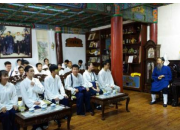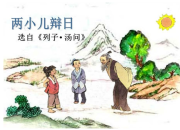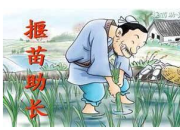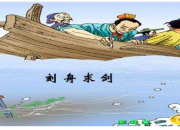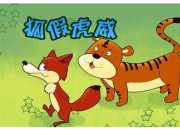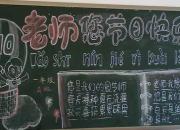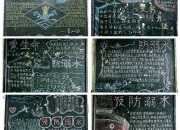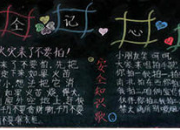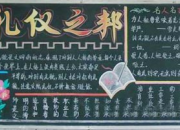美国历史文化的英语作文
时间:2021-08-31 下面是小编整理的美国历史文化的英语作文,欢迎阅读。
第一篇:美国历史文化
Franklin is the Founding Father who is seen as the master of home-spun(朴素的) practical wisdom. Of humble origins, Franklin began as a printer and writer (the author of Poor Richard's Almanack), then became an inventor and scientist, and concluded his long career as the consummate(完美的) diplomat. He played a key behind-the-scenes role at the conventions that led to the Declaration of Independence and the U.S. Constitution.
富兰克林是美国开国元勋,被誉为朴素、务实的智慧大师。他出身贫寒,最初从事印刷和写作(《穷人理查德年鉴》一书的作者),后成为发明家和科学家,最后作为杰出的外交家结束了漫长的职业生涯。他从幕后为各种重要会议发挥了关键作用,最后导致《独立宣言》和《美国宪法》的诞生。
George Washington (1732-99)
The first president of the United States and the American commander in chief during the War of Independence from Great Britain, Washington is often called the "Father of His Country." Originally a gentleman farmer from Virginia, Washington showed great leadership qualities as a soldier. Highly popular with the American public, he was eulogized by a member of Congress as "first in war, first in peace, first in the hearts of his countrymen."
乔治?华盛顿(George Washington, 1732-1799)
华盛顿是美国第一任总统,在摆脱英国统治的独立战争(War of Independence)时期担任总司令,常被尊称为“国父”。他原是弗吉尼亚州(Virginia)一位从事农业的乡绅,后成为一名军人,表现出非凡的领导能力。他在美国公众中享有崇高的声望,一位国会议员曾赞颂他
是“英勇作战第一人,争取和平第一人、國人心中第一人”。
Thomas Jefferson (1743-1826)
Jefferson was the primary author of the Declaration of Independence in 1776. "We hold these truths to be self-evident," he wrote, "that all Men are created equal, that they are endowed by their Creator with certain unalienable Rights, that among these are Life, Liberty, and the Pursuit of Happiness." Jefferson, who was later elected the third president of the United States, also wrote the state of Virginia's law establishing religious freedom and founded the University of Virginia. 托马斯?杰佛逊(Thomas Jefferson, 1743-1826)
杰佛逊是1776年《独立宣言》主要起草人。他写道:“我们认为下面这些真理是不言而喻的 : 人人生而平等,造物者赋予他们若干不可剥夺的权利,其中包括生命权、自由权和追求幸福的权利。”杰佛逊后来当选美国第三任总统。他还起草了弗吉尼亚州保障宗教自由的法律,并创办了弗吉尼亚大学(University of Virginia)。
Sacagawea (ca. 1786-1812)
A young woman of the Lemhi Indians in present-day Idaho, Sacagawea helped the Lewis and Clark expedition in 1804-06 explore vast newly acquired lands in the American West. Sacagawea, who spoke several Indian dialects, served as a guide and interpreter to various Native American tribes during this peaceful expedition. When the expedition encountered the Lemhi band, she arranged for the Lemhi to provide the horses, provisions, and shelter that made the journey to the
Pacific Ocean possible. One of Sacagawea's descendants, Willow Jack, is pictured in authentic costume.
莎卡嘉薇亚(Sacagawea, 1786-1812)
莎卡嘉薇亚是印第安人莱姆哈伊(Lemhi)部族的成员,该地现属爱达荷州(Idaho)。她在1804年至1806年间帮助刘易斯(Lewis)和克拉克(Clark)远征队在美国刚获得的西部广袤土地上探险。莎卡嘉薇亚通晓好几种印第安人的方言,为这项和平探险任务担任向导并充当译员,与各种各样的印第安人部族进行沟通。在探险队遇到莱姆哈伊部族时,该部族经过她的安排为他们前往太平洋沿岸的旅途提供了必需的马匹、粮草和住所。图中身穿正统印第安人服装的威洛?杰克(Willow Jack)是莎卡嘉薇亚的后裔。
Abraham Lincoln (1809-1865)
President during the American Civil War, 1861-65, Lincoln is revered for having kept the Union together and freeing the slaves. A legislator from Illinois, Lincoln won the Republican nomination for president and was elected on an anti-slavery platform in 1860. As a result, 11 southern states seceded and war began. In the Gettysburg Address, he stated his resolve “that government of the people, by the people, for the people, shall not perish from the earth.”
亚伯拉罕?林肯(Abraham Lincoln, 1809-1865)
林肯在1861年至1865年美国南北战争时期担任美国总统,他因维护美国统一和解放黑奴而广受尊崇。林肯原是伊利诺伊州(Illinois)联邦议员,后获共和党提名为总统候选人,1860年以反对奴隶制的政纲当选总统。此后,南方11个州脱离联邦,引发美国内战。林肯发表的葛底斯堡演说(Gettysburg Address)表示,决心“使民有、民治、民享的政府与世长存”。
Susan B. Anthony (1820-1906)
Appalled that the 15th Amendment to the U.S. Constitution (1870) guaranteed the right to vote to newly freed slaves but not to women, Susan B. Anthony led a group of women to the polls in Rochester, New York. She was arrested several times for trying to vote, and later organized the International Woman Suffrage Alliance. She died in 1906, having paved the way for the ratification of the 19th Amendment, which granted American women the right to vote in 1920. 蘇珊?安東尼(Susan B. Anthony, 1820-1906)
蘇珊?安東尼对1870年美国宪法第15条修正案表示极为不满,因为该修正案只保障新获得解放的奴隶有选举权,但不给妇女同样的权利。她带领一群妇女去纽约州罗切斯特(Rochester, New York)投票站表达抗议。她因试图投票参加选举多次被捕,后来组织了国际妇女选举权同盟(International Woman Suffrage Alliance)。她于1906年逝世,但她为1920年保障妇女选举权的第19条宪法修正案获得通过创造了条件。
Albert Einstein (1879-1955)
The foremost physicist of the 20th century, Albert Einstein developed the theory of relativity, which overturned previous ideas on the nature of the physical universe. Born in 1879 in Germany, he developed his important ideas as a young man. In 1933, Einstein took a position with the Institute for Advanced Studies in Princeton, New Jersey, and became an American citizen in 1940." His ideas would prove instrumental in developing the atomic bomb during World War II. 阿尔伯特?爱因斯坦(Albert Einstein, 1879-1955)
爱因斯坦是20世纪久负盛名的物理学家。他创立了相对论(theory of relativity),推翻了关于宇宙本质的旧观念。他1879年生于德国,很年轻时就提出了许多重要观点,1933年,他到新泽西州普林斯顿(Princeton, New Jersey)的高等研究院(Institute for Advanced Studies)任职, 1940年成为美国公民。他的学术思想对于美国在第二次世界大战(World War II)期间发明原子弹发挥了关键作用。
富兰克林?戴莱诺?罗斯福(Franklin Delano Roosevelt, 1882-1945)
罗斯福以其乐观的精神和政治智慧帮助美国渡过了南北战争(the Civil War)以来最艰难的时期:大萧条(the Great Depression)和第二次世界大战(World War II)。他于1933年就任总统,执政长达12年。在此期间,美国经济得到恢复,轴心国军队(the Axis forces)被打败。罗斯福是贫苦民众心目中的英雄,但众多工商界人士并不认同他在“新政” (New Deal)时期实施的经济和社会改革。
Franklin Delano Roosevelt (1882-1945)
Franklin D. Roosevelt's optimism and political savvy helped carry the United States though its greatest domestic crisis since the Civil War: the hard times of the Great Depression and World War II. He assumed the presidency in 1933 and—during his 12 years at the helm—saw his country recover economically and triumph over the Axis forces. FDR was a hero to the poor, but many businessmen did not favor his economic and social reforms, called the New Deal.
约翰?菲茨杰拉德?肯尼迪(
John Fitzgerald Kennedy, 1917-1963)
肯尼迪具有卓越的领导才能,建立了众多的业绩,风度优雅,充满智慧和魅力,人们经常怀着感念的心情回忆他担任美国总统的三年时光。在德克萨斯州达拉斯(Dallas, Texas),刺客的一颗子弹夺走了他的生命,但是他激励了千百万人民。1962年,他以坚定的意志抗击来古巴的苏联导弹威胁,以后又与苏联进行合作,缓和了核军备竞赛。他还创立了争取进步联盟(Alliance for Progress)及和平队(Peace Corps)。
John Fitzgerald Kennedy (1917-1963)
People everywhere look back nostalgically to JFK's three years as president of the United States because of his leadership, his accomplishments, and his grace, wit, and charisma. He inspired millions before he was killed by an assassin's bullet in Dallas, Texas. Although not afraid to stand



